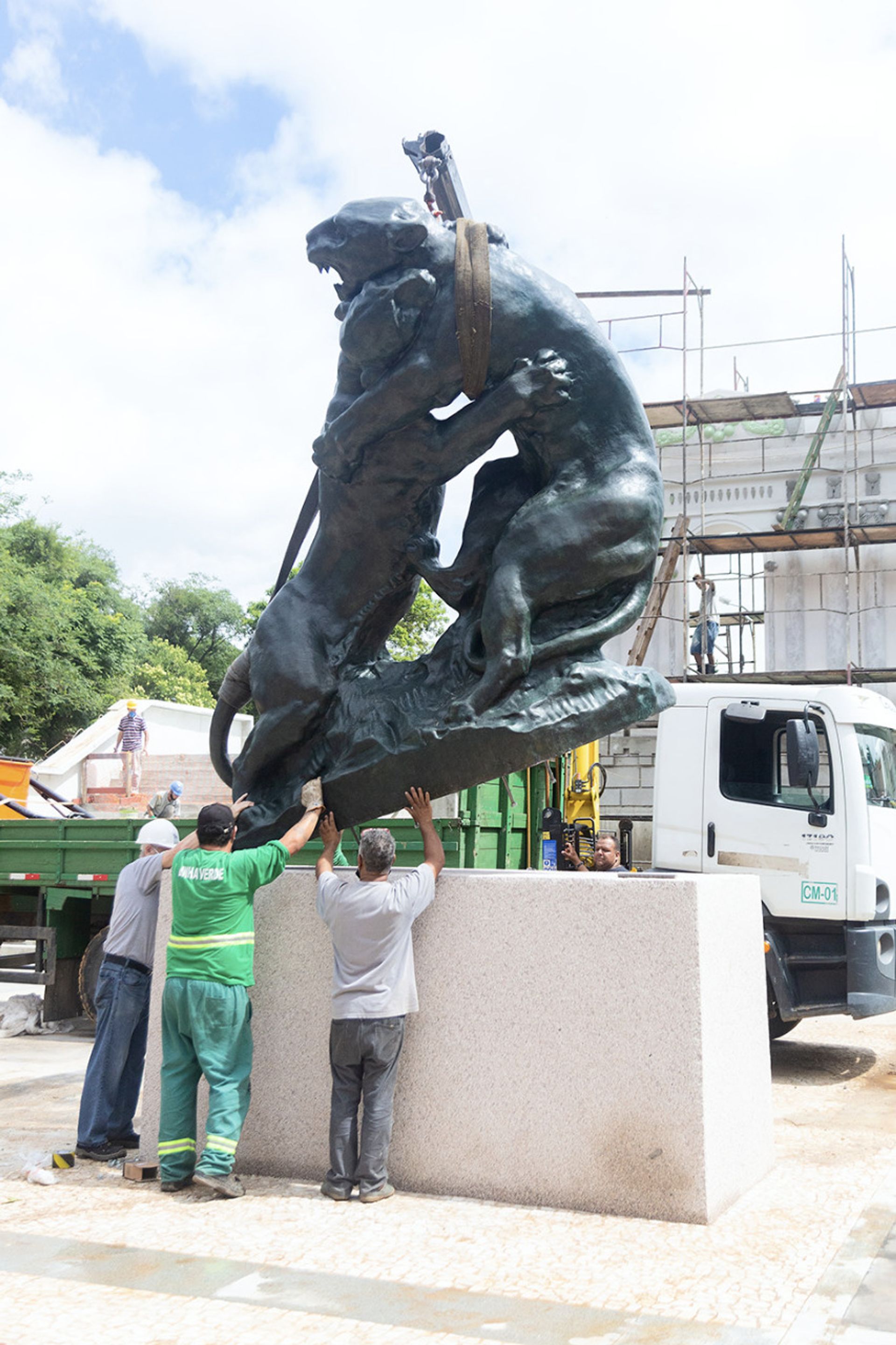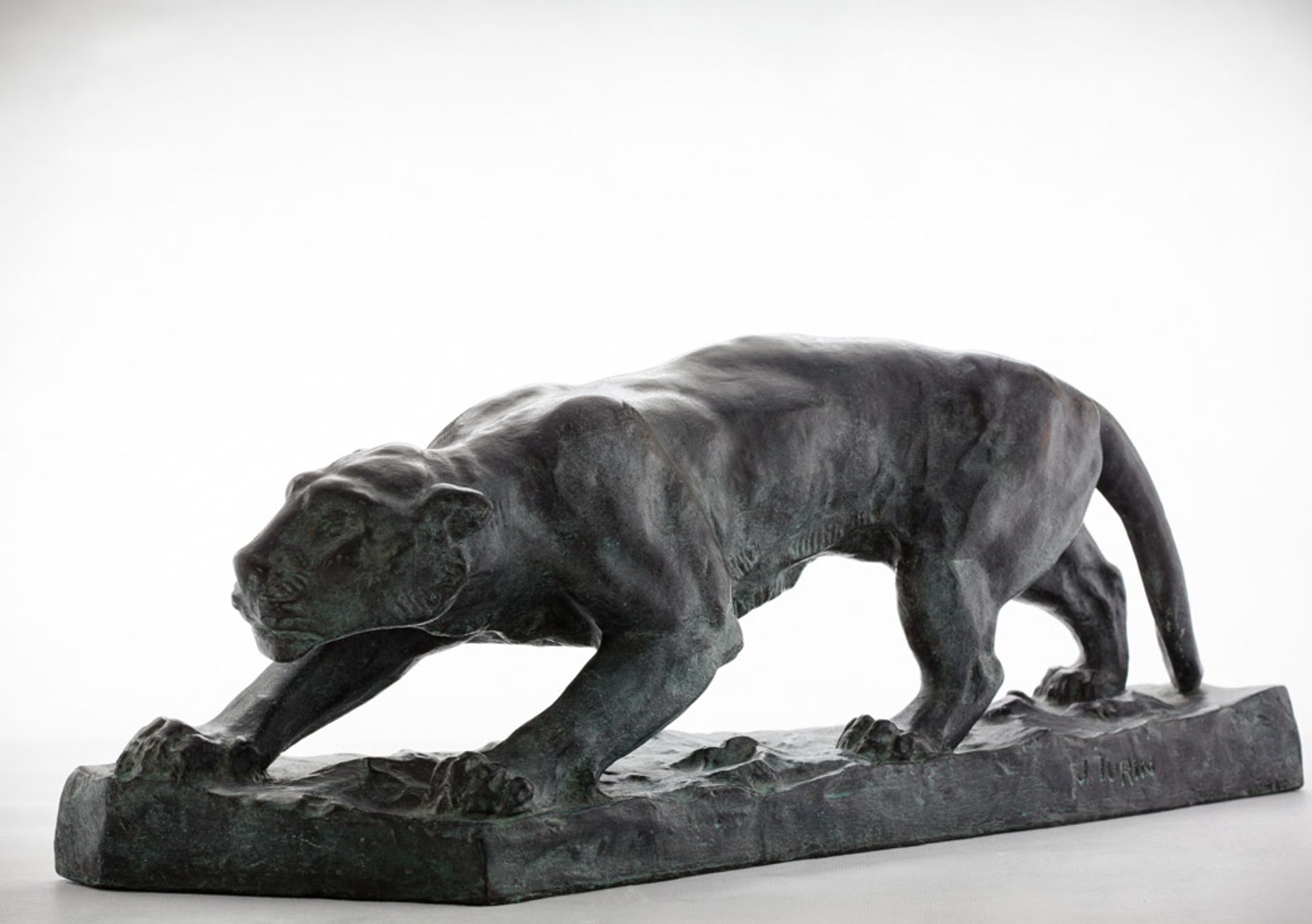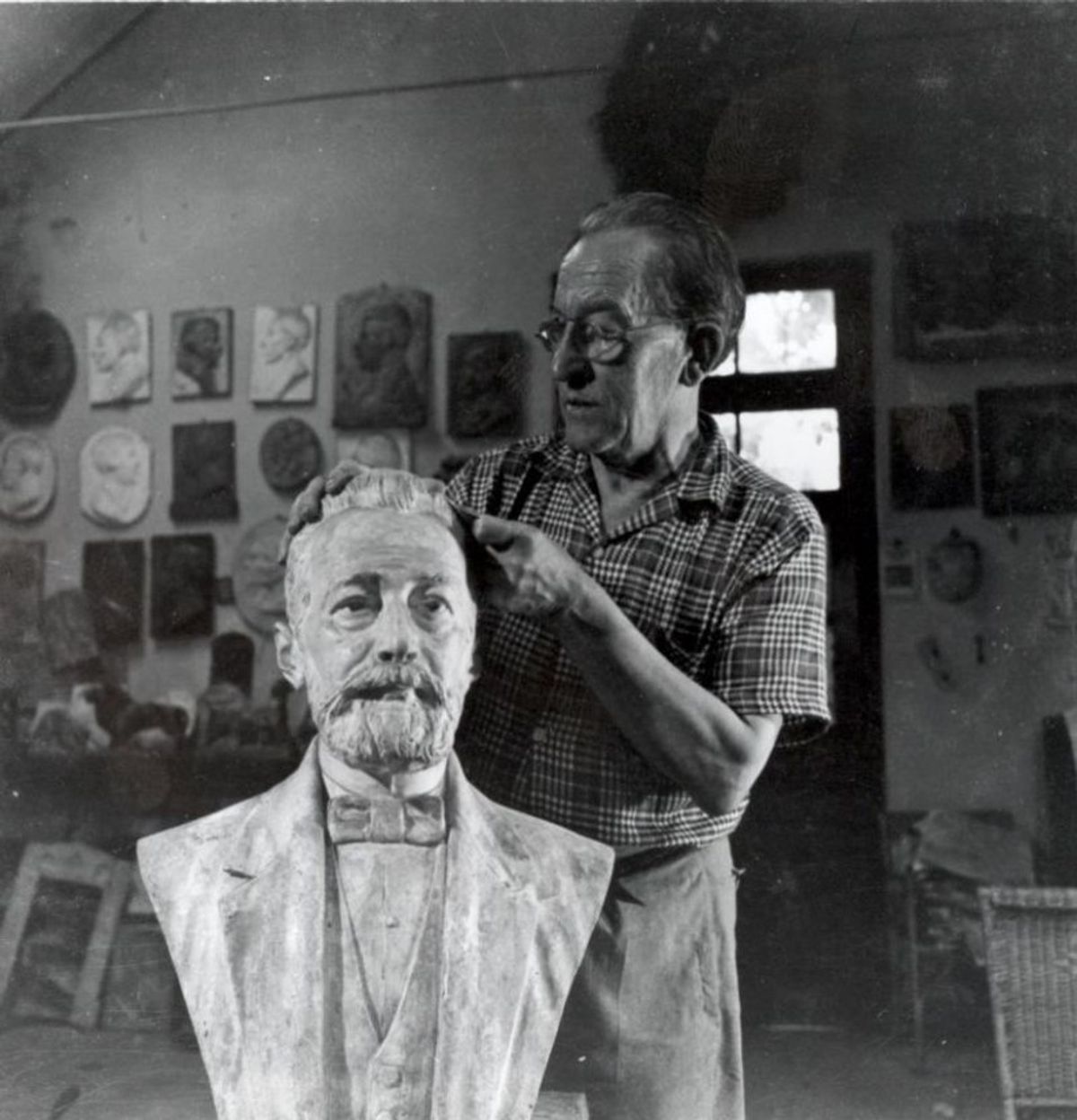The late Brazilian sculptor João Turin, a pioneer of the Paranismo movement which sought to forge a visual identity for the subtropical state of Paraná in the 1920s, will be memorialised with a sculpture park that aims to honour his contributions to Brazilian art.
At a time when Indigenous communities and the Brazilian rainforest are increasingly threatened under the government of the far-right Brazilian president Jair Bolsonaro, Turin’s work takes on a new pertinence for its “inspiration in themes of nature and native culture”, says Samuel Lago, the Brazilian businessman who holds the rights to his archive and initiated the project.
In addition to cultural preservation, the site will also serve to “encourage tourism, bring more resources to the city and encourage sustainable development that values the fauna and flora of the Brazilian environment—the themes to which Turin dedicated his life”, Lago says.
The centerpiece of the memorial in São Lourenço Park is the 10 ft-tall sculpture Marumbi, which shows two jaguars in combat and is named after the Pico do Marumbi State Park, a Unesco World Heritage Site where native species have historically faced habitat loss due to illegal logging and mining. The entire sculpture park will contain 78 works when it opens at the end of March, and around a dozen sculptures are already on view.

Art handlers installing João Turin's Marumbi at São Lourenço Park SSTP Investimentos Ltda
Turin was born in 1878 in Porto de Cima in the state of Paraná and moved to Curitiba as a child, where he later worked as a blacksmith and woodworker before honing his skills in sculpture. He was awarded a government-granted fellowship in 1905 to attend the Brussels Academy of Arts in Belgium and travelled throughout Europe until landing in Paris in 1911, where lived and worked with other Brazilian artists, like the sculptor Victor Brecheret and the painter Tulio Mugnaini.
While there are few known records of his production during his years in Paris, Turin often exhibited at the Salon des Artistes Français, where he obtained an honourable mention, and met Auguste Rodin, whom he later portrayed in a bas-relief. Upon returning to Paraná in 1922, the artist—then heavily inspired by French symbolist sculpture—embarked on the most prolific era of his career, producing hundreds of plaster and bronze figures of emblematic Brazilian themes, particularly many acutely observed depictions of Indigenous culture and native animals.
“His art is the veins of every citizen of Paraná, marking an important part of the history and identity of the people,” Lago says. “And in animalist sculpture—which was raised to the status of great art in the 19th century by artists like the French artist Antoine-Louis Barye—Turin is one of the most important sculptors among Brazilians.”

João Turin, Jaguar Lurking (around 1930s) SSTP Investimentos Ltda
The major retrospective João Turin: Life, Work, Art at the Oscar Niemeyer Museum in Curitiba was one of the most-visited shows in the world in 2014, attracting more than 266,000 visitors, according to a survey conducted by The Art Newspaper. The Pinacoteca museum in São Paulo also held a major exhibition devoted to Turin’s work in 2016 that explored his pivotal contributions to the Paranismo movement and his career, which spanned nearly five decades.
Turin also achieved various posthumous milestones. In 2015, his sculpture Friar Reading (around 1930s) was given to Pope Francis by the former Brazilian president Dilma Rousseff on the pontiff’s first visit to Brazil. The statue, which depicts a friar reading a book, is a rare example of a Brazilian artist held in the Vatican’s art collection.
Turin died in 1949 but his legacy “helped compose the mosaic of the various artistic manifestations that developed in Brazil in the coming decades, when intellectuals, literates and artists played fundamental roles in becoming the main architects of cultural identity”, Lago says.
Lago, who is based in Curitiba and calls himself a life-long admirer of Turin’s work, acquired the artist’s archive in 2011, which contains 360 plaster works, paintings, photographs, sketches, letters and other materials. Lego hopes to make Turin’s oeuvre more visible in Brazil and abroad, and intends to expand the collection with unpublished bronze works based on plaster maquettes, some which will be donated to the Casa João Turin, a museum devoted to the artist in Curitiba.


